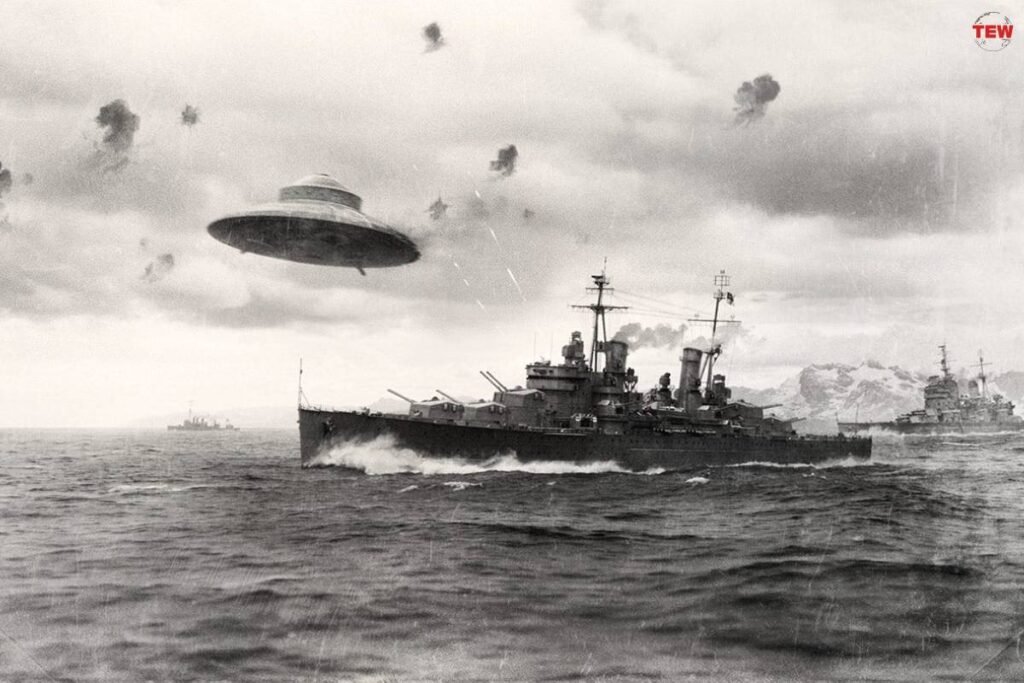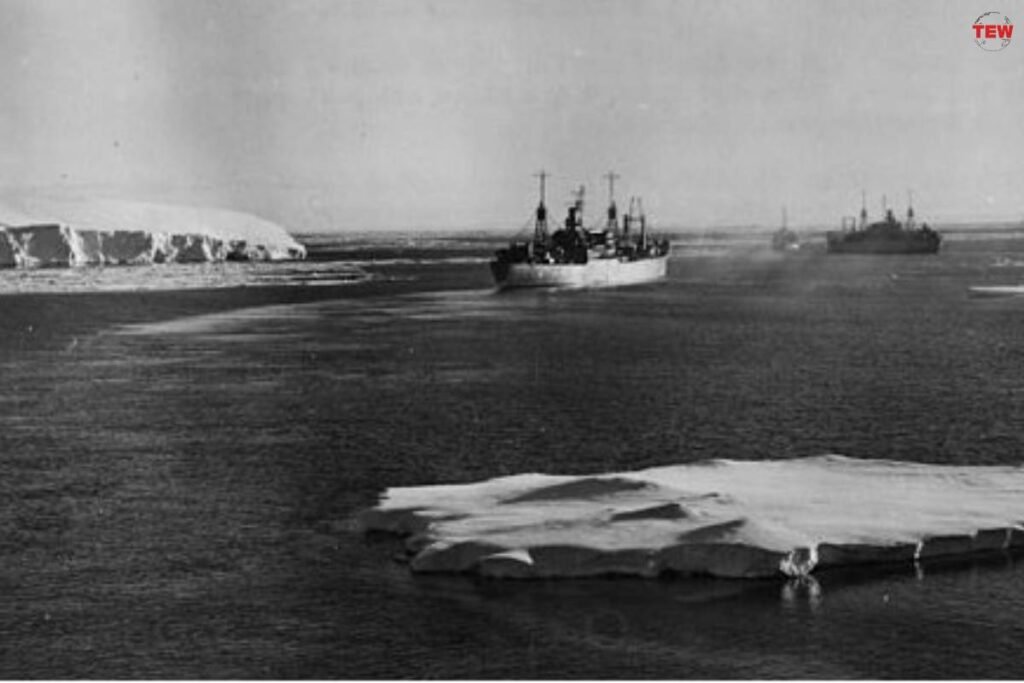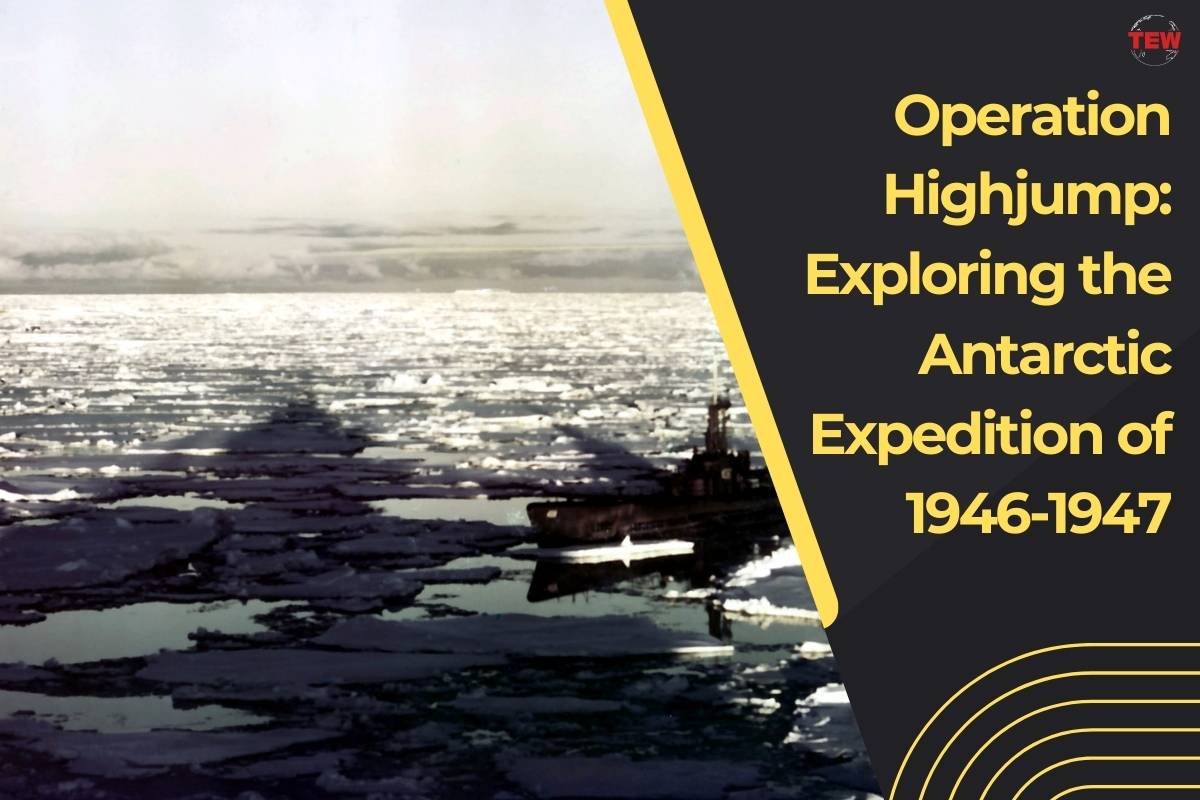Operation Highjump, conducted by the United States Navy between 1946 and 1947, remains one of the most ambitious and enigmatic exploratory missions in the history of polar exploration. Tasked with investigating the vast and largely uncharted Antarctic region, the operation aimed to establish American dominance in the frigid reaches of the South Pole while exploring the possibilities of military strategic interests. This article delves into the background, objectives, and outcomes of Operation Highjump, shedding light on the mysteries surrounding this historic Antarctic expedition.
I. Background:
A. Post-World War II Context:
Operation Highjump unfolded in the aftermath of World War II, a period marked by heightened geopolitical tensions and the emergence of the United States and the Soviet Union as superpowers. The Antarctic, with its strategic importance and unexplored expanses, became a focal point for nations eager to assert their influence in the post-war world.
B. Planning and Leadership:
The operation was conceived under the leadership of Admiral Richard E. Byrd, a highly decorated and renowned American naval officer with a history of Antarctic exploration. Byrd, having previously led expeditions to the region, was well-suited to spearhead this ambitious endeavor.
II. Objectives of Operation Highjump:
A. Military Strategic Interests: While officially billed as a scientific expedition, Operation Highjump had an underlying military agenda. The geopolitical climate of the time fueled suspicions, leading to speculations that the operation aimed to establish military bases in Antarctica for potential future conflicts.
B. Scientific Exploration: Operation Highjump was also designed to advance scientific understanding of the Antarctic region. Objectives included mapping uncharted territories, conducting geological surveys, and studying weather patterns. The scientific data gathered during the operation contributed significantly to polar research.

C. Technological Testing: The expedition served as a testing ground for new technologies, including aircraft, helicopters, and amphibious vehicles. These innovations were intended not only for scientific exploration but also for potential military applications.
III. Expedition Components:
A. Task Force 68: Under the command of Admiral Byrd, Task Force 68 was assembled, consisting of multiple ships, aircraft, and personnel. The fleet included the aircraft carrier USS Philippine Sea, seaplanes, helicopters, and a variety of support vessels.
B. Bases and Outposts: Operation Highjump established several bases in Antarctica, including Little America IV, where the primary hub of operations was situated. Additional outposts were set up for specific scientific and exploratory purposes.
IV. Challenges and Adversities:
A. Harsh Environmental Conditions: Operation Highjump encountered extreme weather conditions, with sub-zero temperatures, fierce winds, and treacherous ice formations posing significant challenges. These conditions tested the resilience of both personnel and equipment.
B. Technical Issues: The use of newly developed technologies, such as helicopters and amphibious vehicles, presented technical challenges in the harsh Antarctic environment. Mechanical failures and logistical issues occasionally hindered progress.
V. Outcomes and Achievements:

A. Scientific Discoveries: The operation contributed significantly to scientific knowledge about the Antarctic continent. Geological surveys, mapping efforts, and weather studies provided valuable data that laid the groundwork for future research in the region.
B. Exploration and Mapping: The expedition succeeded in mapping large portions of Antarctica previously unexplored. This mapping effort paved the way for subsequent scientific endeavors and served as a basis for understanding the continent’s topography.
C. Military Bases and Presence: While the official narrative emphasized scientific exploration, the presence of military personnel and equipment fueled speculation about potential military interests. The establishment of bases in Antarctica raised questions about strategic intentions in the post-war geopolitical landscape.
VI. Conspiracy Theories:
A. Speculations and Controversies: Operation Highjump has been the subject of numerous conspiracy theories and speculations. Some theorists suggest that the expedition encountered extraterrestrial or subterranean entities, while others propose that the military presence was aimed at securing advanced technology from a hidden civilization.
B. Secrecy and Classified Information: The classified nature of certain aspects of operation has contributed to the proliferation of conspiracy theories. Limited access to certain documents and the absence of a comprehensive public record has fueled suspicions about hidden agendas.

VII. Legacy:
A. Continued Exploration: It set the stage for continued exploration and scientific research in Antarctica. Subsequent missions, both American and international, have built upon the data and insights gathered during the 1946-1947 expedition.
B. Lessons Learned: Operation Highjump, despite its challenges and controversies, provided valuable lessons in polar exploration, logistics, and the utilization of advanced technologies in extreme environments. These lessons have influenced subsequent Antarctic expeditions.
C. Historical Significance: The operation holds historical significance as a pivotal moment in the post-war era when nations sought to assert dominance in uncharted territories. It marked a transition from the heroic age of Antarctic exploration to a period of scientific and strategic endeavors.
Conclusion:
Operation Highjump stands as a complex and multifaceted chapter in the annals of Antarctic exploration. Beyond its official scientific objectives, the operation has become shrouded in mystery and speculation, fueling enduring interest and conspiracy theories. While the true nature of certain aspects of the expedition may remain classified, the legacy of Operation Highjump endures in the scientific knowledge it contributed to the understanding of Antarctica and its role in the evolving geopolitical landscape of the mid-20th century.




